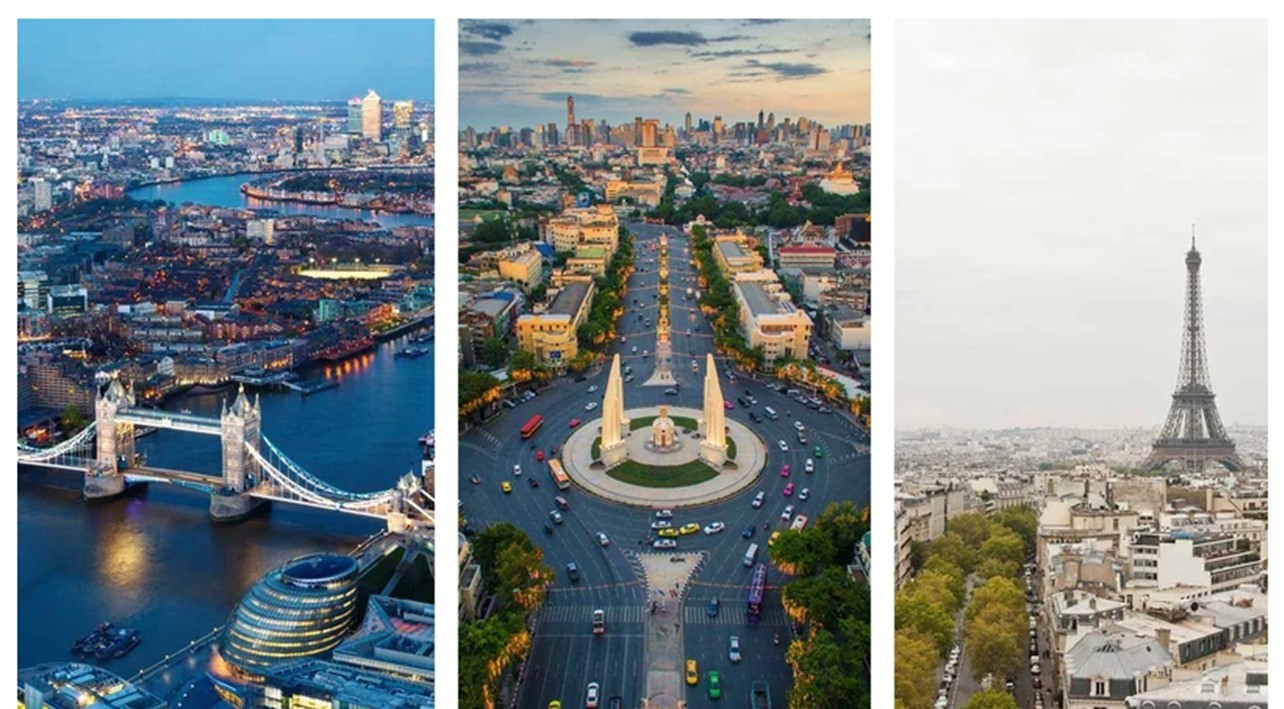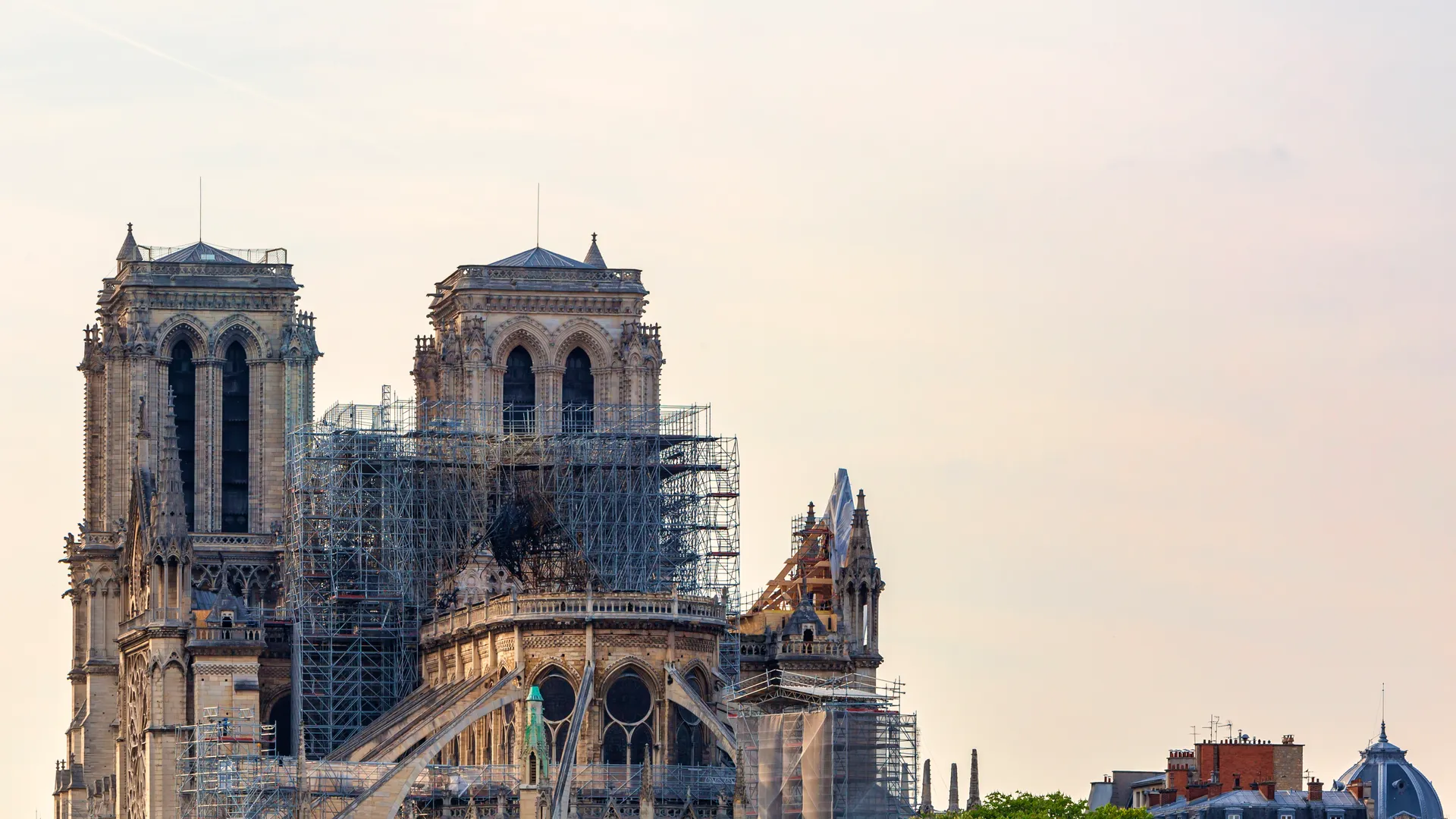January U.S. Travel Restrictions By State–Quarantine And Covid-19 Test Requirements As Pandemic Surges
BY: Alex LedsomSenior Contributo, Recovered from: https://www.forbes.com/sites/alexledsom/2021/01/08/january-us-travel-restrictions-by-statequarantine-and-covid-19-test-requirements-as-pandemic-surges/?sh=52906f70753d
The situation for domestic travel across the U.S. at the start of 2021 is something of a paradox–5.3 million people have been vaccinated across the country, giving hope for a path back to ‘travel normal’. However, the number of daily deaths is still hitting records (a fallout from the inevitable Christmas and New Year social mixing), with a staggering 3,964 reported on 6 January.
What’s clear, is that the winter that everyone foresaw is finally here and the state-by-state breakdown of restrictions across the U.S. below, offers insights to the overall picture:
- the number of states with travel restrictions has remained constant from December to January (from 22 to 23–Idaho stopped restrictions whilst Maryland and Virginia enacted some).
- 27 states still don’t have mandated travel restrictions in place, even with some of the highest infection rates in the country (for example, North Dakota).
- as rates of Covid-19 infection have climbed across the U.S., so too has the number of states being placed onto high risk lists.
- most states have reduced quarantine from 14 to 10 days.
- many states have introduced a ‘test-out’ policy after a few days or one week of quarantine, where people can exit self-isolation with one or two negative PCR tests.
- there is still no uniformity across the travel restrictions which are in place–some quarantines are voluntary, some mandatory. Some require negative Covid-19 tests as a way to be released from self-isolation, some ask for the full fourteen days, regardless.
- however, the biggest change has been a move by more states, which currently don’t have state-wide mandates, to suggest that people follow CDC guidelines.
- Colorado and Delaware, for instance, are advising (but not mandating) that residents avoid non-essential travel and stay at home.
- likewise, Florida and North Dakota are advising residents to follow CDC guidelines (for travelers to get a Covid-19 test one to three days before their trip, and delay their trip if they don’t have a negative result in hand before departure and then to be tested 2-3 days later. Even with a negative test result, people should stay home for seven days. Those who opted not to get the test should limit non-essential activities for 10 days after their travels).
27 U.S. states currently have no state-wide travel restrictions
The following states do not currently have any state-wide travel restrictions; Alabama, Arizona, Arkansas, Colorado (Pitkin County however, requires a negative PCR test within 72 hours of arrival in ski resorts Aspen and Snowmass), Delaware, Florida, Georgia, Idaho, Indiana, Iowa, Louisiana, Michigan, Mississippi, Missouri, Montana (although visitors to the seven Indian reservations should check), Nebraska, Nevada, North Carolina (although the state suggests checking at local destinations), North Dakota, Oklahoma, South Carolina, South Dakota (although some roads through Native American reservations are closed), Tennessee, Texas, Utah, West Virginia, and Wyoming.
23 states currently have travel restrictions
These are Alaska, California, Connecticut, Hawaii, Illinois, Kansas, Kentucky, Maine, Maryland, Massachusetts, Minnesota, New Hampshire, New Jersey, New Mexico, New York, Ohio, Oregon, Pennsylvania, Rhode Island, Vermont, Virginia, Washington State and Wisconsin. (Washington D.C. also has travel restrictions).
Alaska–quarantine for everyone without a negative test
All non-Alaskan residents must do one of three things:
- submit a travel declaration and self-isolation plan AND arrive with proof of a negative Covid-19 test;
- follow the work plan that your employer filed with the state; or
- buy a Covid-19 test upon arrival at a cost of $250 and quarantine until results come through.
Alaskan residents, upon returning from other states, can choose from the same three options but the Covid-19 test is free–or they can choose to not take the test and quarantine for 14 days.
The state advocates a second optional Covid-19 test for everyone, between 5-14 days after arrival. All travelers must practice social distancing for 5 days after arrival, even with a negative test result.
California–regional stay-at-home orders in place
Governor Gavin Newsom said he was “pulling the emergency brake” and all non-essential travel is effectively prohibited (except north of Sonoma County) and hotels may only accept arrivals from out-of-state if they reside for longer than 14 days in quarantine.
There are regional stay-at-home orders in place which vary across the state. For example, San Francisco has a mandatory, 10-day quarantine for people arriving from outside the nine-county Bay Area region. In Los Angeles, all travelers over the age of 16 who are entering from another state or country must submit this online form (acknowledging that they understand and will abide by the LA County Department of Public Health’s travel requirement, and understand the State of California’s Travel Advisory). The same form must be filled in when arriving into an airport or Union station.
Connecticut–mandatory 10-day quarantine for most arrivals
Travelers arriving into Connecticut must quarantine for 10 days except if arriving from New Jersey, New York or Rhode Island. Everyone must fill in an online health form with a risk of a $500 fine for non-compliance.
The only way to avoid this quarantine is to show proof of a negative Covid-19 test taken in the past 72 hours or to take a test upon arrival and quarantine until the results come through.
Hawaii–25{0628c999b898a902dfcf28421e106cb4ba1da59fdaade7848fd4c807354e45d3} of negative tests will be tested again
Hawaii has changed its travel requirements on a monthly basis to evolve with the pandemic. Currently, in order to bypass the 10-day quarantine, passengers must have a negative nucleic acid amplification test (NAAT)–taken at an approved site–either in their hands upon arrival or uploaded into the health form online. This form will give passengers a QR code which can be given to airport screeners upon arrival.
Just to be sure, at least 25{0628c999b898a902dfcf28421e106cb4ba1da59fdaade7848fd4c807354e45d3} of arriving passengers will also be randomly selected for a free, second, rapid Covid-19 test at the airport and travelers must stay for the thirty minutes it takes for the result to come through before they leave.
Travelers to Kauai County, regardless of the ability to produce a negative PCR test result, must go into quarantine for 10 days unless they are heading into a “resort bubble”; from 5 January, people staying at specific hotels can arrive with a negative PCR test, head to their resort on arrival and be tested there, two to three days later. They will effectively remain in quarantine during their time at the hotels and agree to wear an electronic tagging bracelet to make sure they stay put.

Illinois–the number of high-risk states has doubled
In Illinois, travel is unrestricted. However, arrivals into Chicago are categorised into three groups, red, orange and yellow, based on the infection rates in the home states.
Anyone from a red state must quarantine for 10 days or longer (down from 14 days), which currently implicates arrivals from Alabama, Arizona, Arkansas, California, Colorado, Delaware, Florida, Georgia, Idaho, Indiana, Kansas, Kentucky, Louisiana, Massachusetts, Missouri, Mississippi, Nebraska, Nevada, New Hampshire, New Jersey, New Mexico, New York, North Carolina, Ohio, Oklahoma, Pennsylvania, Rhode Island, South Carolina, South Dakota, Tennessee, Texas, Utah, Virginia and West Virginia. (20 states have moved into the red group since December).
Anyone from an orange state must have a negative Covid-19 test result no more than 72 hours old or observe the quarantine–Alaska, Connecticut, District of Columbia, Iowa, Maine, Maryland, Michigan, Minnesota, Montana, North Dakota, Oregon, Puerto Rico, Washington, Wisconsin and Wyoming.
Anyone arriving from a yellow state is not subject to any restrictions–Hawaii and Vermont. (Maine was part of this list in December).
Kansas–returning cruise passengers can ‘test out’ at day 8
Kansas has some of the most specific travel requirements in the U.S., in that a mandatory quarantine is needed for anyone who has:
- taken a sea or river cruise since March 15; and/or
- participated in an out-of-state mass gathering of more than 500 people (where masks were not worn and it was impossible to keep further than 6 feet apart).
If someone falls into this category they can ‘test out’ of a 10-day quarantine by taking a test on day 6 of quarantine and being released on day 8 when the negative result comes through (instead of day 11).
Kentucky–quarantine for all arrivals but no testing required
Since December 15, Kentucky has been discouraging out-of-state travel and asks that you quarantine for 14 days if you have traveled to any other state.
Maine–everyone must sign a certificate of compliance
People arriving in Maine must enter a 10-day quarantine or sign to say they have had a negative Covid-19 test in the past 72 hours. Arrivals with pending tests must isolate until results come through. All types of Covid-19 tests are acceptable. All arrivals must sign a Certificate of Compliance.
Residents of two states are exempt from both conditions of entry: New Hampshire and Vermont. People in quarantine may leave hotels or campsites to do outdoor activity such as hiking.
Maine residents, who travel to states not on the exempt list, must also quarantine upon return for 10 days or until a negative test result can be proved.

Maryland–new quarantine/testing rules in place
Anyone arriving into Maryland from out-of-state must quarantine for 10 days or show proof of a negative Covid-19 test taken up to 72 hours before their arrival. Visitors are also advised to re-test 72 hours later.
Travelers arriving from Delaware, Pennsylvania, Virginia, West Virginia and Washington, D.C. are exempt. People who do not conform to these requirements will face a $5,000 fine or a year in prison.
Massachusetts–Hawaii remains the only low-risk state
All out-of-state arrivals must fill in a travel form. Arrivals from high-risk states must quarantine for 10 days or produce a negative Covid-19 test taken in the last 72 hours. The fine for non-compliance is $500. Hawaii remains the only low-risk state.
Minnesota–14-day quarantine in place
Visitors are asked to quarantine for 14 days upon entry (or re-entry) although out-of-state travel is discouraged.
New Hampshire–quarantine a requirement, excluding New England states
If entering New Hampshire from other than a New England state (Maine, Vermont, Massachusetts, Connecticut and Rhode Island), travelers are asked to quarantine for 10 days. However, after seven days in quarantine, travelers can ‘test out’ with a negative PCR test. These regulations will be reviewed on 15 January.
New Jersey–quarantine for 7 days even with negative results
The state is currently advising against all non-essential interstate travel.
Visitors and returning travelers must quarantine for 10 days if they haven’t been tested. Those people who already have a negative test are asked to isolate for 7 days, regardless of later results.
People who arrive from New York, Connecticut, Pennsylvania and Delaware are exempt. Travelers from other than these four states must complete an online survey.
New Mexico–current quarantine for all out-of-state arrivals
In New Mexico, the state is asking that visitors self-quarantine for 14 days or the entire length of stay, if it is shorter than 2 weeks, even with a negative Covid-19 test from all high-risk states (a 5{0628c999b898a902dfcf28421e106cb4ba1da59fdaade7848fd4c807354e45d3} or higher positivity rate or a positive test rate higher than 80 per one million residents, as measured over a 7-day rolling average).
Every state is currently considered a high-risk state.

New York–a quarantine and two tests
Anyone arriving from a state which does not border New York (New Jersey, Connecticut, Pennsylvania and Delaware) must quarantine for 10 days, but visitors can ‘test out’ of quarantine if they arrive with a negative test taken three days before arrival and then quarantine for three days. They then take a second test on day four, after which, if they have a negative result Governor Andrew Cuomo announced, they are “free to go about their business.”
All visitors must fill out a Traveler Health Form and any visitor not complying with regulations, faces a fine of up to $10,000–enforcement teams are currently stationed at Port Authority and regional airports.
People who leave New York for less than 24 hours do not need to get a test before returning, nor do they need to quarantine. They must, however, get a Covid-19 test on the fourth day back.
Ohio–quarantine from states with 15{0628c999b898a902dfcf28421e106cb4ba1da59fdaade7848fd4c807354e45d3} positivity rating
Ohio is restricting travel from states with a positive testing rate of 15{0628c999b898a902dfcf28421e106cb4ba1da59fdaade7848fd4c807354e45d3} where arrivals must self-quarantine for 14 days–currently listed as Alabama, Arkansas, Idaho, Iowa, Kansas, Kentucky, Missouri, Ohio, Oklahoma, Pennsylvania, South Dakota, Tennessee, Texas and Utah.
Oregon–everyone must quarantine
Any arrivals into Oregon, including returning residents from out-of-state, must self-isolate for 14 days. Non-essential travel and tourism is ill-advised.
Pennsylvania–quarantine, a test or a $300 fine
All travelers into Pennsylvania, above the age of 11, must quarantine for 10 days or provide proof of a negative Covid-19 test in the 72 hours before entering the state.
Failure to comply may result in a $300 fine under the Disease Prevention and Control Law.
Rhode Island–only 5 states exempt from quarantine
Rhode Island visitors must quarantine for 14 days if arriving from states which have a positive testing rate of 5{0628c999b898a902dfcf28421e106cb4ba1da59fdaade7848fd4c807354e45d3} or more, or they can opt out if they have a negative Covid-19 test taken in the last 72 hours.
There are currently 45 states on the updated spreadsheet–Alabama, Alaska, Arizona, Arkansas, California, Colorado, Delaware, Florida, Georgia, Idaho, Illinois, Indiana, Iowa, Kansas, Kentucky, Louisiana, Maine, Maryland, Massachusetts, Michigan, Minnesota, Mississippi, Missouri, Montana, Nebraska, Nevada, New Hampshire, New Jersey, New Mexico, North Carolina, North Dakota, Ohio, Oklahoma, Oregon, Pennsylvania, South Carolina, South Dakota, Tennessee, Texas, Utah, Virginia, Washington, West Virginia, Wisconsin and Wyoming. (Visitors from Puerto Rico must also quarantine).
That leaves only Connecticut, Hawaii, North Dakota and Vermont as low-risk where arrivals are exempt from quarantine.
Visitors from out-of-state must also complete a certificate of compliance and a travel screening form.
Vermont–travelers can ‘test out’ of quarantine on day 8
The state has initiated a 14-day quarantine for anyone arriving or returning to Vermont. Visitors can end the quarantine after 7 days if they can show proof of a negative Covid-19 test.
Anyone arriving in Vermont in a private car or plane (as well as rental cars) can choose to complete quarantine and testing in another state before arriving.
Anyone staying in short-term rental or lodging as well as at campsites must complete a certificate of compliance or tick an online compliance statement when they check-in, to ensure they have understood quarantine requirements.
Virginia–recommends two-stage testing
Whilst Virginia doesn’t have quarantine, it is recommending that travelers follow CDC guidelines; anyone arriving from out-of-state should get tested one to three days before travel and delay departure if they don’t have a negative result. People should be tested again three to five days after they return and even with a negative test, they should quarantine for 7 days. Those who decided to not get tested, should self-isolate for 14 days.
Washington D.C.–visitors from Maryland, Virginia exempt
Anyone arriving into Washington D.C. from a high-risk state and visiting for more than 24 hours must get a negative Covid-19 test no more than 72 hours before their arrival. If the stay is longer than three days, another test must be done three to five days after arrival.
High-risk states are categorized as those having more than 10 daily Covid-19 cases per 100,000 people. An interactive map complied by The New York Times shows which districts and regions meet this threshold.
Travelers from Maryland and Virginia are exempt.
Washington State–quarantine for 14 days
Residents are not encouraged to travel and anyone arriving and returning from out-of-state is asked to self-isolate for 2 weeks.
Wisconsin–everyone advised to cancel or postpone all travel
Whilst there are no state-wide travel restrictions, the Wisconsin Department of Health recommends that no one should travel, including within the state. The website states, “we recommend Wisconsinites cancel or postpone all travel, including travel within the state.”
BY: Alex Ledsom, Senior Contributo, January 20201, January U.S. Travel Restrictions By State–Quarantine And Covid-19 Test Requirements As Pandemic Surges, Forbes, Recovered from: https://www.forbes.com/sites/alexledsom/2021/01/08/january-us-travel-restrictions-by-statequarantine-and-covid-19-test-requirements-as-pandemic-surges/?sh=52906f70753d






